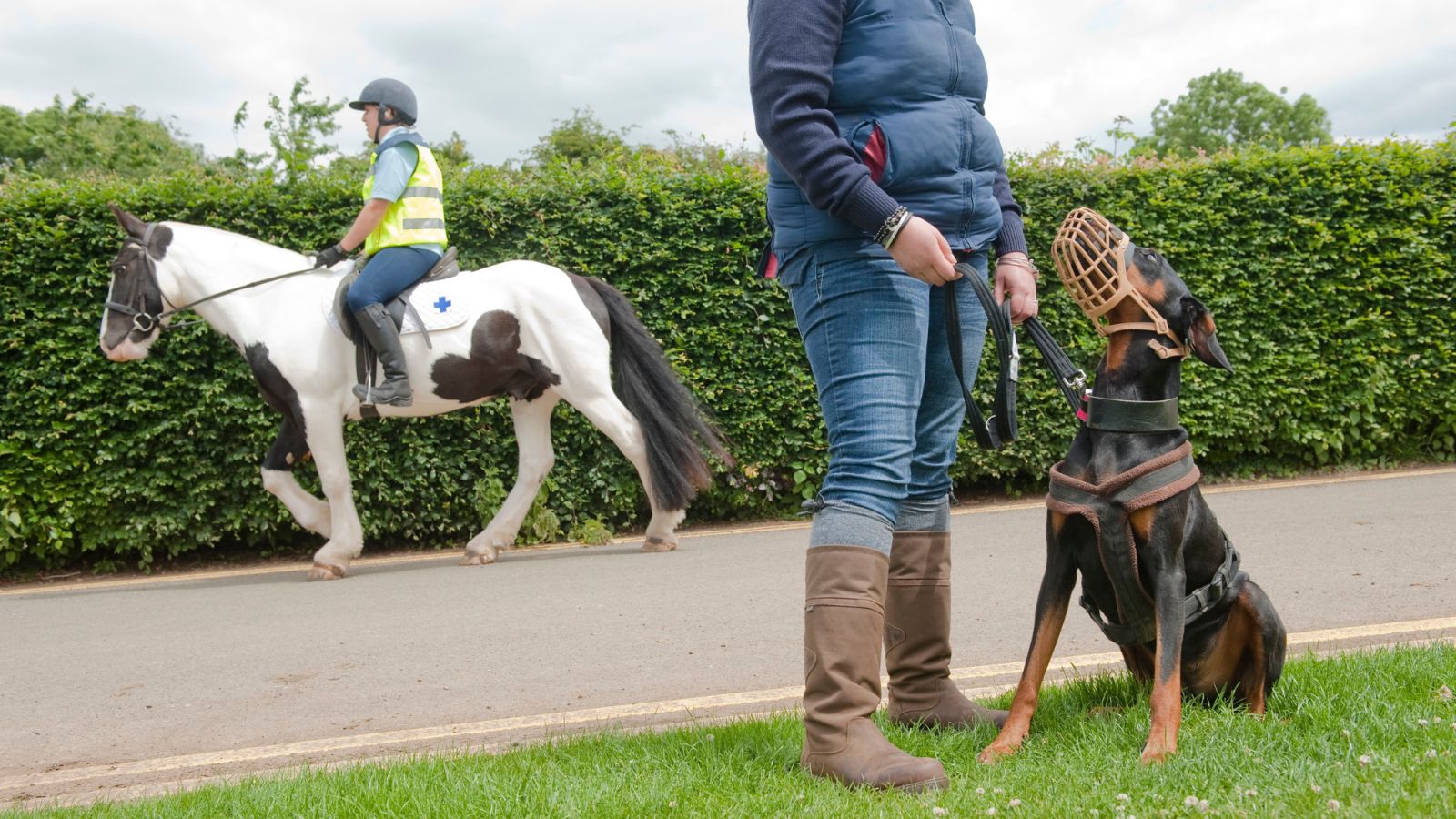
Dogs and muzzle training
When muzzle training your dog, it's important to be patient, positive and use plenty of rewards.
Why is muzzle training a good idea?
Even if your dog does not need to wear a muzzle, it’s still a great idea to train them to wear one. They can be useful in a variety of different situations:
- If your dog is nervous around people or other dogs out in public (a muzzle can encourage others to give your dog space)
- If your dog has the potential to be aggressive towards others out on walks
- If your dog is prone to scavenging frequently on walks
- If your dog struggles with handling or procedures, either at the vet or at home
Even the most laid back dog can snap when they’re in pain – preparing for this situation is a sensible idea.
What muzzle should you use?
We recommend using a basket style muzzle, like the Baskerville muzzle. These types of muzzles feature an open basket weave, allowing your dog to breathe freely, drink water and accept treats. You can buy a Baskerville muzzle from your vets and pet shops.
There are a variety of similar styles available, but if you're struggling to find a brand that fits, some companies will make a custom size using your dog's measurements.
Muzzles that completely close your dog’s mouth do not allow them to pant, preventing them from losing heat.
Important
Your dog’s muzzle should be fitted correctly. Ensure that the piece across the nose does not rub or get in the way of their eyes, and that they are able to pant fully.
How to muzzle train your dog
It's essential to be patient when training your dog to comfortably wear their muzzle. You'll need to use lots of tasty rewards. To make them even more enticing, save your dog's favourite food just for muzzle training sessions.
Your body language during training is also important. Be as positive and jolly as you can – your dog will notice you enjoying muzzle training too!
Important
Do not rush through the steps – keep training sessions short (a few minutes at first is plenty) and space them out over a period of time. Go at your dog's pace, and if they're unsure, go back to the previous stage until they are ready.
Step one:
Get your dog used to the muzzle by placing some of their favourite food in the bottom (at the nose). Sticky foods such as cream cheese, xylitol-free peanut butter or pate are useful.
Your dog is likely to smell the treat and put their nose into the muzzle themselves. Do not fasten the muzzle – just let your dog enjoy the food and get used to the sensation of the muzzle around their face. If your dog is reluctant to put their face in the muzzle, let them lick the outside until they feel more confident.
Repeat this step in a range of places, such as the house, garden or out on a walk.
Tip
Always let your dog come towards the muzzle, rather than you moving towards them. This makes it more fun for your dog, and you'll know they're enjoying their training if they're keen to come over and pop their nose in.
Step two:
Once your dog is confidently placing their nose in the muzzle, you can pass them another treat through the gaps at the end of the muzzle. This rewards your dog for staying in position. Repeat this step regularly until your dog is confidently staying in the muzzle for longer periods of time.
You can also start helping your dog get used to the 'snap' of the fastener. While your dog is not wearing the muzzle, close the strap near them and reward them after they hear the sound.
Step three:
Once your dog is comfortable with the sound of the snap and is confidently keeping their nose in the muzzle for longer periods of time, you can begin to fasten the muzzle. To start with, fasten the muzzle, feed them a treat through the gap at the end, then remove the muzzle right away.
Gradually leave it on for longer periods, but only go at your dog's pace – make sure you continue to treat your dog through the muzzle. You can also mix up muzzle training with other training you might do with them. This helps keep it fun and interesting for your dog.
Tip
If your dog tries to remove the muzzle, do not worry. You can regain your dog's attention with a piece of their favourite food. Once your dog has stopped scratching at the muzzle, reward them with lots of praise and the treat.
If your dog removes their muzzle during a training session, take a break and go back to a step where they were previously comfortable.
Step four:
When your dog is comfortable wearing the fastened muzzle, you can begin to move around again. Keeping your dog active and feeding them treats through the muzzle can help them get used to moving with the muzzle on. Make things fun by changing direction, and keep up the rewards and praise.
You can then progress to attaching your dog's lead to get them used to walking next to you while muzzled.
You should also try changing the environment where you practice muzzle training. If your dog especially enjoys walks, try muzzle training while you're out and about. They will likely start to associate wearing the muzzle with this positive activity.
Tip
Only give your dog treats when they are wearing the muzzle, and stop when the muzzle is taken off. This helps your dog to associate muzzle training with tasty rewards.
How to make sure a muzzle is a good fit
Once your dog is happy to wear a muzzle, you'll need to do a final check to make sure it's a comfortable and safe fit.
If your dog's muzzle is too loose, they may be able to shake it off. The strap around the neck should not allow more than one small finger to be inserted underneath.
It's a good idea to regularly check the strap, as some may loosen over time and will need adjusting.
Page details
Reviewed
• 7 December 2023
Next review
• 7 December 2026






